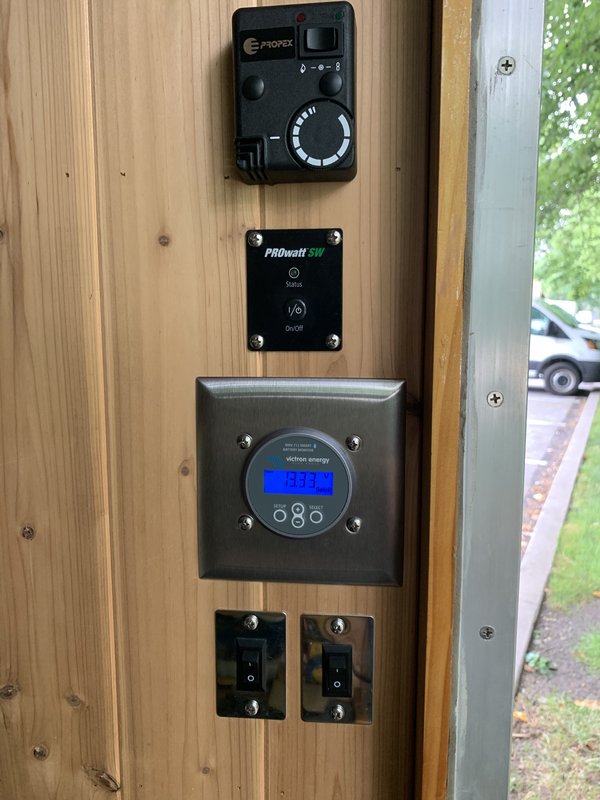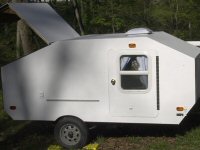Visiting my trailer today where I park it, I decided to change how I go about keeping the battery charged, so that the new LiFePO4 chemistry stays happier long term.

In the past for my lead acid deep cycle batteries, I would leave the solar panels hooked up to it all the time, because 100% charge was ideal for preventing degradation. For LiFePO4, storage over long periods at 100% charge is not desirable, and can lead to cell degradation. (100% charge would be 3.65 volts per cell, or 14.6 volts for the pack.) For the last 2 weeks I had set my solar charge controllers to max out at 14.1 volts, so that things charged to maybe 90%. Today I decided I am not sure that it is necessary to leave the solar charge controllers on at all between camping trips. I ran the fan and some electronics to get the pack’s Amps down to 90% according to the Victron battery meter (which is better than approximating it using voltage readings). I turned off the solar panel so no power would be coming in. There should be very little parasitic draw from the shunt and charge controllers, and none from the battery heater thermostat since I have that turned off. I’ll check back on it in a week to see how it’s doing, but I think this is how I’m going to roll from now on:
At the end of a camping trip, before leaving the campsite, I’ll turn the solar panel off and run the battery down to 90%. Then at home, I’ll park the camper with everything electronic turned off.
Before a camping trip, before leaving, I’ll turn the solar panel on so the battery can charge up to full. I would leave the panel on and charging the whole time while camping, when I’m actively using battery power.
I have thought about how I want to incorporate the battery heater in the winter also. I don’t want to leave it on all the time, which I would have to do if I was solar charging all the time between camping trips. I will plan to turn the heater on prior to a winter camping trip, letting the battery warm up before solar charging. Then the heater would be enabled continuously (with the thermostat) during the entire camping trip. At the end of the trip when turning off the panels I could turn the battery heater thermostat off too.
The change of paradigm here is treating the trailer like an electronic device you turn off when not in use, rather than leaving charging going all the time. The LiFePO4 batteries should be happier that way. The only exception would be if the lithium batteries were highly discharged already. If they were under 25% I would probably charge them for a day or two, to give them a buffer from any parasitic draw. Extreme discharge (under 2.5 volts per cell or 10 volts for the pack) can kill them too.











